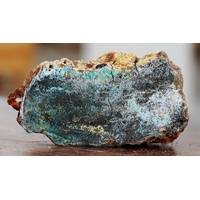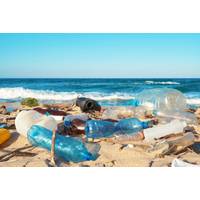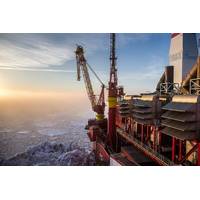
EXPLAINER-Why Does Norway Want to Mine the Seabed?
. Norway is not part of the EU but is a member of the European single market. The EU's views on the issue are vital for Oslo's plans, some analysts have said.Norway is encouraged by EU ambitions to diversify imports of critical minerals and to boost local production. However, the European Parliament has also called on member-states to support a global moratorium on seabed mining. The European Commission has been also advocating for a deep-sea mining moratorium until more is known about the risks.HOW DO YOU MINE MINERALS FROM THE SEABED?There is no commercially available technology to

Kremlin’s Threat to Interfere with Undersea Data Cables Should Be Taken Seriously
on June 14 that he hopes to have completed the investigation by autumn.Vulnerable undersea cablesFor all his characteristic bluster, which have included threats involving Russia’s nuclear arsenal, Medvedev’s threat should be taken seriously. As we have shown in a report to the European parliament of last year, subsea cables are the backbone of the contemporary digital economy. Almost all of our internet connections depend on them.According to SubTelForum’s Submarine Cable Almanac as of the beginning of 2023, there were 380 cables in Europe on the ocean floor, mostly the size

EU Moves to Curb Ocean Plastic
The European Parliament on Wednesday agreed on new measures to tackle marine litter coming from single-use plastic products most often found on European beaches, as well as abandoned fishing gear and oxo-degradable plastics.The Single-Use Plastics Directive, proposed by the European Commission and adopted by the European Parliament this week, places a ban on selected single-use products made of plastic for which alternatives exist on the market, such as cotton bud sticks, cutlery, plates, straws, stirrers, sticks for balloons, as well as cups, food and beverage containers made of expanded polystyrene
A United Front in Ocean Observation
and shape the next actions to promote and expand Europe’s ocean observing capacity. Going forward, the EMB will continue to work with its partner network, EuroGOOS, to develop EOOS. A Roadmap for EOOS is currently in development and will be discussed at a special event in the European Parliament on September 8. This will be followed by an open consultation with all stakeholders on EOOS in autumn 2016. “The global Ocean is facing multiple anthropogenic and natural stressors and consequently marine ecosystems are increasingly vulnerable to exceeding tipping points

Environmentalists Welcome EU Proposal to Protect Arctic Waters
The European Parliament has passed a resolution calling for a protected area around the North Pole which could ban oil companies and industrial fishing fleets from the region, informs Greenpeace. The move represents a clear break from the current positions of ‘Arctic Council’ members such as Norway, Denmark, Canada and Russia who have resisted calls for permanent protection of the Arctic region. In contrast, Finland, another Arctic state, recently adopted the sanctuary proposal as official policy. Reacting to the news, Greenpeace activist and Arctic 30 member Sini Saarela from Finland

Energy Companies Propose Rebuild of European Energy Policy
Following on from the formal call of May 21, 2013 to the European Council, Gérard Mestrallet CEO of GDF SUEZ and Paolo Scaroni CEO of ENI appeared before a European Parliament hearing. The event was jointly organized with Amalia Sartori (Chair of the EU Parliament’s Energy Committee) and took place in the presence of the European Commissioner for Energy, Günther Oettinger. The hearing was aimed at highlighting the risks of the EU’s present energy policy. Indeed, the efforts made by energy companies to attract the necessary private sector investors have been hampered by the

Places of Refuge
far offshore and then sunk with bombs and depth charges. In the VENOIL incident, the tanker was ordered offshore until oil discharges had been brought under control. Other instances could be added to this list. In the aftermath of several marine casualties off the coast of Europe, the European Parliament and the Council issued a Directive in 2002 establishing a Community vessel traffic monitoring and information system. Among other things, the Directive provides: Non-availability of a place of refuge may have serious consequences in the event of an accident at sea. Member States

 February 2025
February 2025





